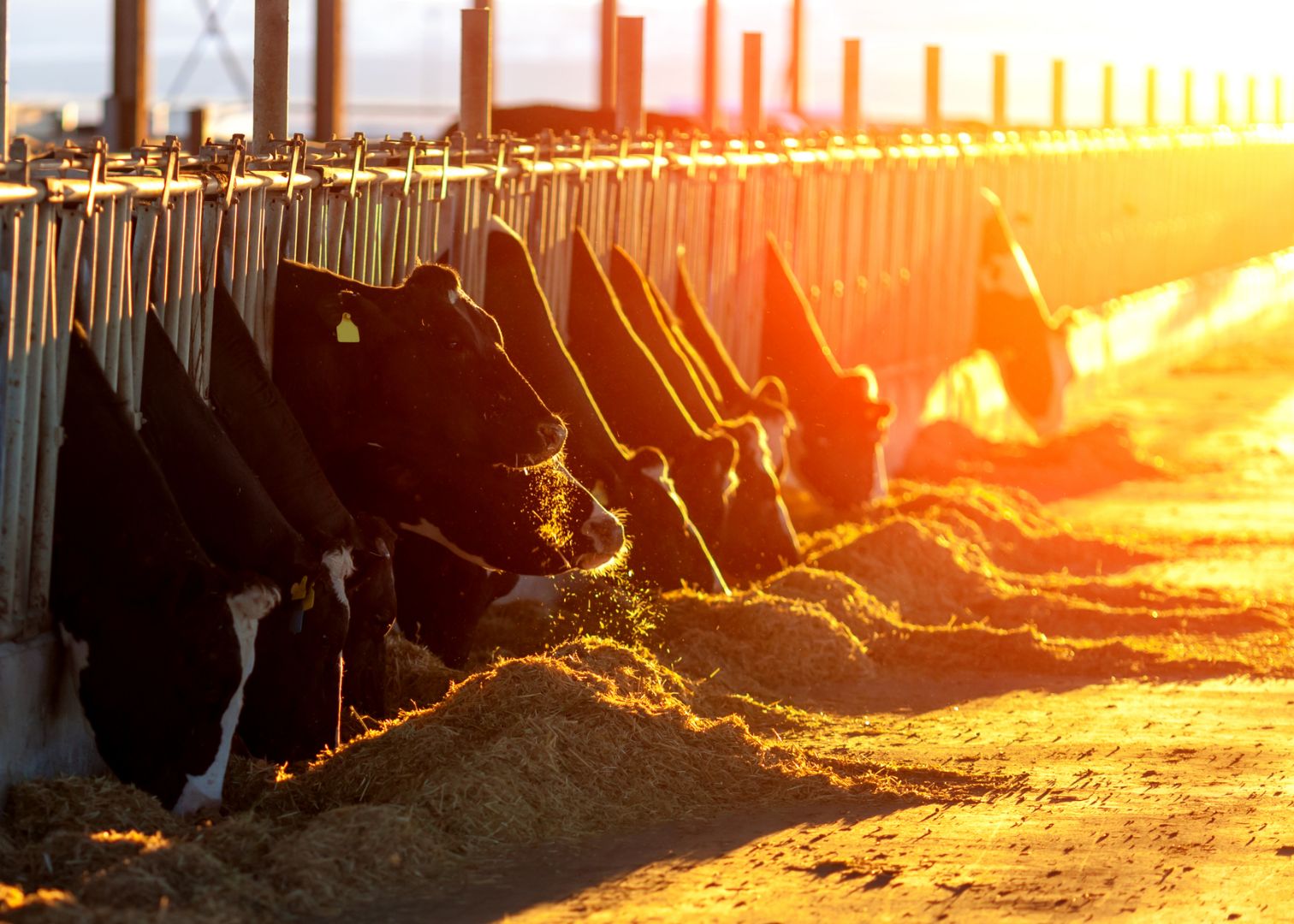
With clear evidence of the damaging effects of heat stress on dairy cattle, the focus now turns to what can be done about it. The recent Climate Farm Demo webinar presented a range of mitigation strategies shared by PhD candidate Brigitte de Bruijn, which balance infrastructure investment with everyday management changes.
On-farm mitigation strategies
Regardless of whether cows are housed indoors or kept outside grazing, there are several ways to mitigate heat stress in dairy herds.
Environment changes
One approach to protect cows from heat stress is to control the environment. By housing indoors in a fully enclosed barn that is fully ventilated it is possible to provide a climate controlled environment in which cows are not exposed to the heat. At the other end of the spectrum of options, it is possible to run a system where the cows are exposed to heat and adapt to it themselves.
In reality, most farms aim to find a sweet spot between these extremes, which works for the farm context. It is not always possible to fully remove the heat stressor from the cows by building a fully climate controlled system, so other mitigations can be implemented.
For example, management may be adjusted by providing more water from more locations, to enable every cow in the herd to increase their intake, regardless of their position in the social hierarchy.
Exposure to solar radiation can be decreased. For outdoor herds this can be achieved using trees or an artificial parasol to provide shade, or by providing access to grazing with the option to move into housing, so cows can position themselves indoors or outdoors depending on where they are most comfortable.
For indoor housing systems, fans can be used to keep the air moving. Another option is to use soaker lines – showers to cool down cows – but these must installed according to the environment, as in more humid climates they can increase humidity further. In more humid environments, soaker line systems can be set up to drop water for a short amount of time, then fans go on immediately afterwards to move the humid air out of the shed.
Roof cooling is another option, when the outside of the housing is cooled, to create a cooler and more comfortable environment for the cows inside.
Management changes
Changing the time of milking, feeding and insemination to avoid the hottest periods in the day can reduce the risk and impact of heat stress.
This can include grazing at night instead of during day. Not only do the cows feed while it is cooler, but the housing can cool down during the night without the cows inside, so they can return to a cooler shed in the morning.
The webinar highlighted ongoing debate around whether avoiding breeding during hot periods can be an effective strategy. With seasonal calving there can be an option to avoid calving or inseminating during summer, but has to fit with the farm context.
Again, reducing housing occupancy so there is more space per cow can reduce heat stress risk as it is easier for animals to cool down, but it won’t work for every system.
Taking measures to reduce infection pressure can also support cow health during hot periods. In warm and humid environments bacteria and pests can grow more quickly, so increasing frequency of bedding changes, removing manure and an effective pest control strategy can reduce infection pressure and stress caused by flies.
Effects of climate change on dairy farming systems
Mitigating heat stress is one part of a broader climate resilience challenge. Heat affects fodder production, fertility, water supply, and infrastructure. Integrating changes across systems will build farm resilience in a warming world.
Mitigating heat stress doesn’t require radical change—but it does demand a thoughtful approach tailored to your system. From practical shifts in timing and water provision to more significant infrastructure updates, every step can make a difference.
To dive deeper into real-farm strategies and insights, watch the Climate Farm Demo webinar here.




